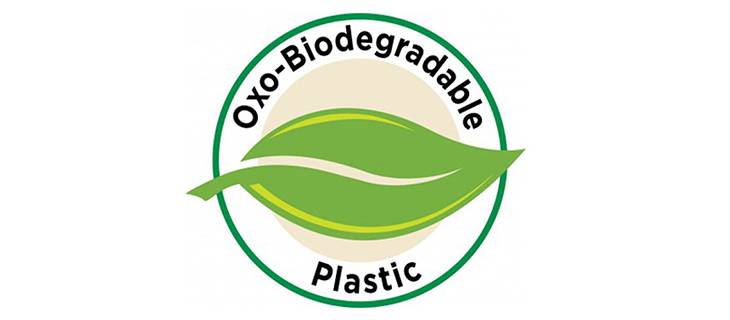Oxo-biodegradable Plastics: Making the Environment More Efficient
Oxo-biodegradable plastics are plastics that degrade when placed under certain conditions. But how are they different from biodegradable plastics you might ask? Oxo-Biodegradable plastic uses metal salts to start and speed up the degradation process. This results in extremely small fragments of plastic that no longer visually pollute the environment.
Oxo-biodegradable (OXO) plastic, functions in a very unique and environmentally efficient way. They will degrade and become biodegradable as soon as it is exposed to the environment as litter. Moreover, it is a much faster process of degradation than that of ordinary plastic. This is possible because they contain additives, called prodegradant catalysts which enable them to degrade in the open environment.
The breakdown process of OXO is called oxo-degradation and it takes place over two-stages, namely:
- Peroxidation
- Bio-assimilation
Peroxidation is the process of breaking down the long chain hydrocarbons, in oxo-biodegradable plastics. This stage is possible due to the reaction between the additives with exposure to heat and UV light. In the second stage the bacteria, enzymes, and fungi, digest the broken-down material resulting in the plastic degrading into CO2.
As mentioned above, OXO contains additives that are susceptible to light, heat, and moisture. When exposed to these conditions, they react and the bonds holding the plastic together become weak. This weakening causes the plastic to break down into smaller and smaller pieces till they visually degrade and disappear. This will prove to be extremely helpful when it comes to promptly degrade plastic bags left on the ground or floating in the ocean.
What a great solution to eliminate the plastic waste problem for good!
When it comes to packaging, OXO plastic has the added advantage of being the same strength and weight as conventional plastic. They offer a much better alternative to paper bags as well. Reason being, paper bags weigh six times more than plastic and require ten times the storage space. They, therefore, require more vehicles for transportation. OXO plastics not only save on transportation but also fuel efficiency as they are extremely light-weight.
In the case of containers made with bioplastics, such as cornstarch, the fuel and water requirements for production are enormous and frequently result in greater pollution. Also, cornstarch only degrades rapidly in a high-temperature and microbially rich compost conditions, as compared to OXO plastics.
Another benefit is that we can significantly reduce the number of trees that are being cut down to produce paper bags. In addition, paper bags generate 70% more air pollutants and take four times as much energy to manufacture.
As you can see, OXO plastic is extremely significant and proves to be of great importance when it comes to reducing waste and improve environmental-efficiency. With increased use and manufacture of OXO plastic, we can expect a greener and a more sustainable future for our planet.
Leave a Reply Cancel reply
Recent Posts
- Understanding The Materials That Are Used To Build Plastic Toys
- All You Need To Know About Food-grade Plastics
- A Glance At The Materials That Boost The Performance Of Plastics
- Understanding The Importance Of Exploring New Business Opportunities In The Plastic Industry
- Understanding The Importance Of Investing in R&D For The Plastic Industry
Categories
- 3D Printing
- AIPMA
- Automation
- Automobile Sector
- Bio Plastics
- Environment
- Innovations In Recycling
- Latest Innovations
- Molds & Dies
- News
- Packaging Industry
- Plastic
- Plastic Application
- Plastic Industry
- Plastic Market
- Plastic Myths
- Plastic News From The World
- Plastic Packaging
- Plastic Products
- Plastic Recycling
- Plastic Solar Cells
- Plastic Toys
- Plastic Waste
- Plastic World
- Plastics
- Plastics And Their Applications
- Plastics In Agriculture
- Plastics In Healthcare
- Plastics In Medical Industry
- Plasticulture
- Processing Machinery
- Recycling Machines
- Robotics
- Uncategorized
- Virtual Reality
Archives
- November 2023 (3)
- October 2023 (2)
- September 2023 (3)
- August 2023 (3)
- July 2023 (3)
- June 2023 (3)
- May 2023 (2)
- April 2023 (2)
- March 2023 (2)
- February 2023 (2)
- January 2023 (2)
- December 2022 (3)
- November 2022 (1)
- October 2022 (1)
- September 2022 (2)
- August 2022 (1)
- July 2022 (3)
- May 2022 (3)
- March 2022 (2)
- February 2022 (1)
- January 2022 (1)
- September 2021 (2)
- August 2021 (3)
- July 2021 (4)
- June 2021 (4)
- May 2021 (3)
- April 2021 (2)
- March 2021 (4)
- November 2019 (8)
- October 2019 (8)
- September 2019 (8)
- August 2019 (8)
- July 2019 (8)
- June 2019 (8)
- May 2019 (8)
- April 2019 (8)
- March 2019 (8)
- February 2019 (11)
- January 2019 (8)
- December 2018 (8)
- November 2018 (12)
- October 2018 (12)

